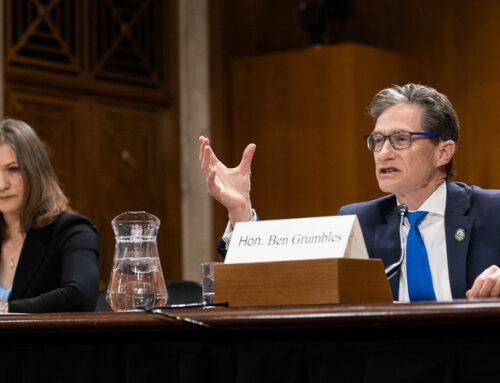Can weaker environmental rules help fight climate change? California just bet yes.
July 2, 2025
Earlier this week, California lawmakers passed among the most sweeping reforms to the state’s environmental regulations in more than half a century. The measures were primarily intended to boost housing construction and urban density in the Golden State, which faces among the most severe housing shortages in the U.S.
Though the move was celebrated by Governor Gavin Newsom as he signed the bills into law, it has exposed tensions between the progressive priorities that motivate Democratic lawmakers. Housing affordability advocates have clashed with those promoting environmental justice, with the former boosting the bills and the latter remaining wary. More broadly, the move exposes divisions between those who want more tools to mitigate climate change and environmentalists who would rather maintain strict limits on what can be built and how.
The reforms target the California Environmental Quality Act, which then-Governor Ronald Reagan signed more than 50 years ago. Known as CEQA, the legislation requires public agencies and decision-makers to evaluate the environmental impact of any project requiring government approval, publicize any effects and mitigate them if feasible.
Supporters say the law has prevented or altered scores of projects that would have been detrimental to the environment or Californians’ quality of life. But CEQA has also become the basis for a regular stream of formal complaints and lawsuits that pile substantial costs and delays onto projects that are ultimately found to have minimal harmful effects — sometimes killing them entirely. In one infamous instance, opponents of student housing near the University of California Berkeley argued that the associated noise would constitute environmental pollution under CEQA, which led to a three-year legal battle that the university only won after it went to the state supreme court. Examples like this have led CEQA, which was once a national symbol of environmental protection, to become vilified as a cause of the state’s chronic housing shortage.
After this week’s reforms, most urban housing projects will now be exempt from the CEQA process. The new legislation also excepts many zoning changes from CEQA, as well as certain nonresidential projects including health clinics, childcare centers and advanced manufacturing facilities, like semiconductor and nanotech plants, if they are sited in areas already zoned for industrial uses. (A related bill also freezes most updates to building efficiency and clean energy standards until 2031, angering climate advocates who otherwise support the push for denser housing.) Governor Newsom used a budgetary process to push long-debated changes into law, with strong bipartisan support.
Some activists welcomed the changes, saying they will lead to denser “infill” housing on vacant or underutilized urban land, slower growth in rents and home prices, and shorter commutes — with the welcome byproduct of fewer planet-warming emissions.
“For those that view climate change as one of the key issues of our time, infill housing is a critical solution,” read one op-ed supporting the measures. Other environmentalists, however, lambasted the changes as environmentally destructive giveaways to developers. After Newsom signed the legislation, the Sierra Club California put out a statement calling the changes “half-baked” measures that “will have destructive consequences for environmental justice communities and endangered species across California.”
At a time when President Donald Trump’s assaults on climate policy and environmental protections have galvanized opposition from the left, what unfolded in California serves as a reminder that, even among Democrats, a divide remains on the extent to which regulation can help — or hurt — the planet. It’s the type of pickle that liberals across the country may increasingly face on issues ranging from zoning to permitting reform for renewable energy projects, which can face costly delays when they encounter procedural hurdles like CEQA. (Indeed, in California, CEQA has been an impediment to not just affordable housing but also solar farms and high-speed rail.)
“How do we make sure the regulations we pass to save the planet don’t harm the planet?” asked Matt Lewis, director of communications for California YIMBY, a housing advocacy organization and proponent of the CEQA reforms. Transportation accounts for the largest portion of California’s carbon footprint, and Lewis argues that denser housing will be key to keeping people closer to their jobs. But, he said, people with a “not in my backyard” attitude have abused CEQA to slow down those beneficial projects. (His organization’s name is a play on this so-called NIMBY disposition, with YIMBY standing for “yes in my backyard.”)
“One of the leading causes of climate pollution is the way we permit or do not permit housing to be built in urban areas,” Lewis said, adding that more urban development could reduce pressure to build on unused land in more sensitive areas. He pointed to other legal backstops, like state clean water and air laws, that can accomplish the environmental protection goals often cited by supporters of the CEQA process. “CEQA isn’t actually the most powerful law to make sure that manufacturing facilities and other industrial facilities protect the environment,” he said.
In short, Lewis believes that any downsides of the new reforms pale in comparison to their benefits for both people and the planet. “Did we fix it perfectly this time? I’m willing to admit, no,” he said, adding that any shortcomings that environmentalists are concerned about could be repaired in future legislative sessions.
But many environmentalists contend that the downsides in the new legislation are too large.
“We put one foot forward but we take another step back,” said Miguel Miguel, director of Sierra Club California, noting his opposition to the nonresidential exemptions. He said that CEQA often acts as a first line of defense that allows community input on development projects. Without it, he argues, community voices will be marginalized. Miguel speaks from personal experience: CEQA helped save the mobile home park where he grew up from being replaced by more expensive apartments.
Kim Delfino, an environmental attorney and consultant who followed the legislation, said that the scope of the reforms expanded from simple support for urban housing development to become “a potpourri of industry and developer desires.” She added that CEQA requires biological surveys that can be the first step to invoking other environmental protections.
“If you never look, you will never know if there are endangered species there,” she said. “We’ve decided to take a head in the sand approach.”
This impasse between environmentalists and housing-focused advocates like Lewis is now decades-old and among the reasons that CEQA reforms — or rollbacks, depending on who you ask — have taken so long to come about. As the fight has drawn out, skepticism has become entrenched.
“Maybe I’m wrong,” California YIMBY’s Lewis said of his optimism that the latest changes can thread the needle between the state’s housing needs and environmental priorities. But, he added, he’d rather defer to elected lawmakers than environmentalists, who have long opposed his housing advocacy. “The environmental movement in California has been fundamentally dishonest about housing,” he charged.
The Sierra Club’s Miguel, for his part, hopes for more cooperation between the competing parties, lest the disagreements poison future legislative efforts. At the end of the day, all parties involved share the same broad goals, if with different levels of emphasis.
“We have to do everything and anything all at once,” he said, referring to climate and environmental policy. “That is fine art.”
Search
RECENT PRESS RELEASES
Related Post




